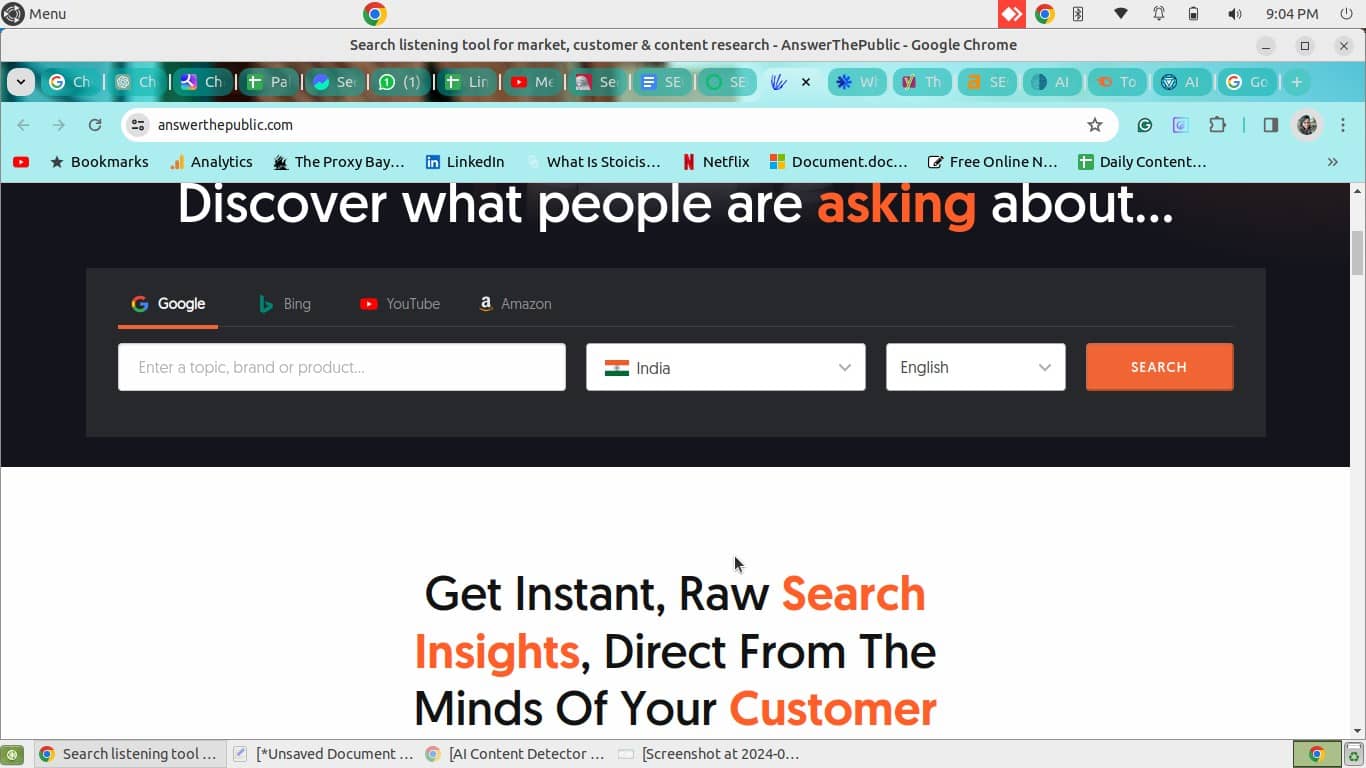Last Updated on July 27, 2024 by Admin
In this competitive business environment, a thorough understanding of Search Engine Optimization (SEO) has become more important than ever. It plays an important role in increasing your website’s visibility on search engines, increasing organic traffic and increasing brand awareness.
An important part of SEO is creating high-quality and relevant content tailored to your target audience. In this article, we will explore everything related to SEO issues and how they can increase your brand visibility and attract more visitors to your website.
Let’s get started!
What is SEO Content?
SEO content means creating valuable, relevant, and user-relevant content that meets the needs of your audience and the needs of search engines. This can be blog posts, articles, websites, videos, infographics, and more.
The key components of SEO Content
- Keyword research: Great content starts with in-depth keyword research. Do meticulous research on the language of your audience, identify relevant terms, and integrate them while creating content in order to rank on search engines.
- Creating relevant content: Content is an important part of SEO. And it goes beyond just spreading information; professional SEO content tells a story, highlights the pain points of customers, provides solutions, and engages them effectively.
- User-centric focus: A well-designed website, intuitive navigation, and content that addresses user intent not only reduces bounce rates but signals to search engines the credibility of your digital presence.
How do Search Engines assess and rank your content?
Search engines boost your content’s reach based on a variety of criteria to provide users with the most relevant and valuable results. While the specific systems used by search engines are complex and constantly changing, there are some basic considerations.
- Relevance: Search engines examine how well the content matches the user’s search query. This involves finding the right keywords in the content and how to put them.
- Quality and engagement: Search engines prioritize high-quality content that provides users with value. Factors such as readability, grammar, user engagement metrics (e.g., time on page, bounce rate), and presence of multimedia elements can affect content ranking.
- Authority and credibility: Search engines consider the authority and credibility of the results. This includes things like backlinks from high quality websites, social signals, and the overall reputation of the website or author.
- User experience: Search engines consider the overall user experience of a website, including factors such as page load speed, mobile-friendliness, and ease of navigation among others.
How to get started with SEO Content?
SEO content writing involves the process of creating online content that is not only interesting and informative to the audience but also optimized for search engines. Here are some basic steps to successfully write SEO content:
- Choose a topic to write: The first step is to identify a content topic that will resonate with your target audience. We have listed three main ways to get started:
- Reddit search: Search active subreddits visited by your target audience. And look for common themes over and over again. These can be GREAT topics to cover in a blog post or video.
- Competitor blog analysis: Find popular blog posts, videos, and infographics from your competitors’ blogs. What do they have in common? What can you emulate (or improve)?
- Persona development: Create customer personas to gain insight into the types of content your target customers actively search for online when they are not searching for your specific product or service. Understanding their overall interests and preferences can trigger content perceptions that align with their online behaviors.
- Find relevant keywords: The next step is to find relevant keywords for your content. Keyword research is the heart of an effective SEO strategy. It involves finding words, queries, and phrases that users are searching for. There are various tools and techniques available for conducting keyword research.
- Google autocomplete: Google Autocomplete offers suggestions as you type in the search bar, giving you insights into related terms and variables that users might be searching for. It can help you find additional keywords to consider.

- Answer the public: Answer The Public is a tool that scrapes data from Google Autocomplete and generates a list of keyword variants based on a seed keyword. It can provide a range of suggestions, including questions that you can use as a starting point for your keyword research.

- Wikipedia: It contains articles curated by industry experts, organized into categories, which can help you discover keyword ideas related to your topic.
- Keyword research tools: There are various keyword research tools available, such as Ubersuggest, Moz, SEMrush, and Google Ads. These tools offer extensive keyword data, including search volume, competition, and related keywords.
- Google autocomplete: Google Autocomplete offers suggestions as you type in the search bar, giving you insights into related terms and variables that users might be searching for. It can help you find additional keywords to consider.
- Add value to your content: To ensure your content brings value to the reader, follow these steps:
- Present readers with valuable information through fresh perspectives, personal experiences or unique discoveries.
- Offer readers actionable takeaways by presenting detailed analyses, practical suggestions, or step-by-step instructions.
- Recognize prevalent issues or difficulties encountered by your intended audience and propose solutions or suggestions.
- Engage your readers by adopting a conversational tone and captivating writing style.
- Optimize On-page elements: On-page optimization is crucial if you want your content to rank on search engine rankings. You can start by crafting a compelling, attention-grabbing headline that entices readers to click on your content. Keywords should be incorporated naturally in a headline so that it still stays compelling.Also, your content should be structured properly with clear headings and sub-headings. Make sure to break long paragraphs into shorter ones. To improve readability, you should use bullets, numbered lists, and formatting.
Another important thing to take care of is integrating internal links to other pages on your website to improve navigation and provide additional context. Incorporate external links to authoritative sources that support or expand upon the information in your content.
Lastly, make sure to write a compelling meta title and description. This will help search engines understand the relevancy of your content. Also, use videos, images, and infographics to enhance the user experience.
- Track and measure content performance: Once the content has been published, keep monitoring its performance using analytics tools. Track key metrics such as organic traffic, user engagement, and keyword rankings to assess the effectiveness of your SEO content marketing strategy. This will help you update your content as per the trends and improve your rankings as well.
Wrapping Up!
As I conclude this article, I would just say that SEO is a perfect blend of techie stuff and telling interesting stories. Focusing on SEO-optimized content is not just about beating search engine rules but making real connections with your audience. Take the tips from this guide, roll with the changes in SEO, and see your online presence grow. If you are looking for SEO content writing services to create top-notch blogs and articles, you can get help from reliable digital marketing agencies like AlgoSaga. The experts will make your SEO content journey easier and improve your visibility on search engines as well.
